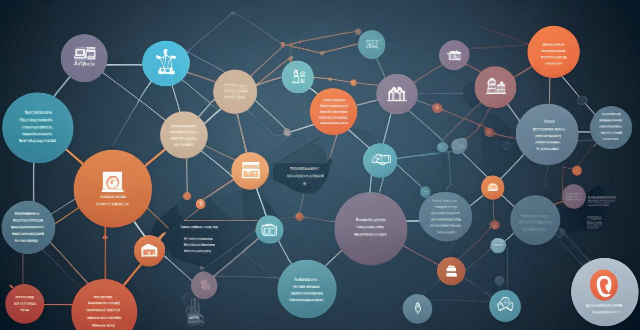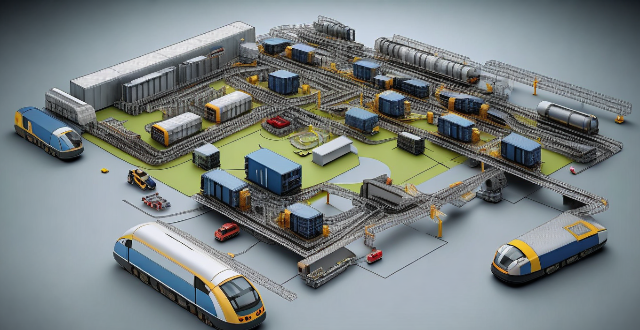Protocols Comp

What is the significance of communication protocols in cloud computing ?
In the realm of cloud computing, communication protocolsIn the realm of cloud computing, communication protocols role in facilitating communication protocols play a pivotal role in facilitating seamless and efficient data exchange between various components of a cloud infrastructure. These protocols ensure that data is transmitted reliably and securely across different platforms, devices, and applications within the cloud ecosystem. This article delves into the significance of communication protocols in cloud computing by highlighting their key functions and benefits.

How have communication protocols evolved over time ?
The evolution of communication protocols has significantly impacted modern communication systems, transitioning from simple analog signals to complex digital networks. Early communication systems were limited in speed and reliability, but laid the foundation for future advancements. The digital revolution introduced packet switching, leading to protocols like X.25 and Frame Relay. The Internet Protocol Suite (TCP/IP) standardized communication over the internet, enabling global connectivity and applications like email and web browsing. Wireless protocols like Wi-Fi and Bluetooth allowed mobile devices to communicate without physical connections. Future developments may include 5G networks, quantum communication, and IoT protocols. Overall, the evolution of communication protocols has greatly enhanced our ability to connect and access information.

What are some examples of wireless communication protocols ?
This article provides an introduction to wireless communication protocols, which are sets of rules and standards that enable devices to communicate with each other without the use of physical cables. It discusses several examples of wireless communication protocols, including Bluetooth, Wi-Fi, Zigbee, and LoRaWAN. Each protocol has its own unique features and benefits, making them suitable for different applications. For example, Bluetooth is commonly used for connecting devices such as smartphones, headphones, keyboards, and mice, while Wi-Fi is used for connecting devices to the internet or other networks. Zigbee is commonly used in home automation systems, and LoRaWAN is commonly used in IoT applications. By understanding these protocols, developers can create innovative solutions that improve our daily lives.

What role do communication protocols play in IoT (Internet of Things) devices ?
Communication protocols in IoT devices are crucial for data transmission, interoperability, scalability, security, and error handling. Common protocols include MQTT, CoAP, Zigbee, Bluetooth Low Energy, and LoRaWAN, each with specific features like lightweight design, mesh networking, energy efficiency, long-range communication, and broadcast capabilities. These protocols enable seamless interaction between devices and will continue to drive innovation in the IoT field.

How do communication protocols ensure data integrity and security during transmission ?
The text discusses the role of communication protocols in ensuring data integrity and security during transmission. It outlines mechanisms such as checksums, sequence numbers, acknowledgments for maintaining data integrity, and encryption, authentication, and secure protocols for ensuring data security. The article emphasizes that adhering to these rules allows devices to communicate reliably and securely over networks.

How do communication protocols manage errors and congestion in a network ?
Communication protocols play a crucial role in managing errors and congestion in a network. They use various techniques such as checksums, acknowledgments, timers, traffic shaping, congestion control, and error recovery mechanisms to ensure reliable and efficient data transmission between devices on a network.

What are the most commonly used communication protocols in networking ?
The text discusses the following topics: 1. Introduction 2. Transmission Control Protocol/Internet Protocol (TCP/IP) 3. Hypertext Transfer Protocol (HTTP) 4. File Transfer Protocol (FTP) 5. Simple Mail Transfer Protocol (SMTP) 6. Conclusion

How does a communication protocol differ from a data format ?
### Topic Summary: Communication Protocol vs. Data Format This topic discusses the differences between communication protocols and data formats, two critical aspects of data exchange in computer systems. A communication protocol is a set of rules that govern how devices or systems communicate with each other, including syntax, semantics, and timing. On the other hand, a data format defines the structure or layout of data for storage or transmission, focusing on the organization of bits, bytes, or fields and their encoding. The main differences between these two concepts are their purpose, scope, and complexity. Communication protocols deal with the entire process of data exchange, including error handling, flow control, and congestion control, while data formats focus solely on the structure of the data. Examples provided include HTTP as a communication protocol and JSON as a data format, which can be used within various communication protocols to send structured data. In summary, communication protocols are like the rules of a conversation, defining how devices interact, while data formats are like the language used in those conversations, specifying how the information is structured and encoded.

Can you explain the working of HTTP and HTTPS protocols ?
HTTP and HTTPS are two important protocols for data transmission on the internet. The main difference between them is that HTTPS encrypts the transmitted data to protect it from interception and tampering, while HTTP does not. HTTP operates by default on TCP port 80 and transmits data in plaintext, while HTTPS uses SSL/TLS for data encryption and operates by default on TCP port 443. The working steps of HTTP include address parsing, DNS resolution, HTTP request packaging, establishing a TCP connection, sending a request command, server response, and closing the connection. On the other hand, the working steps of HTTPS involve an initial handshake, verifying a digital certificate, session key exchange, encrypted data transmission, and connection closure. With increasing concerns about cybersecurity, HTTPS has gradually become the preferred choice for websites requiring secure data transmission.

How can technology be utilized to enhance safety protocols in construction projects ?
The text discusses how technology can enhance safety protocols in construction projects. Wearable technology, such as smart helmets and vests, drone technology for aerial surveillance and 3D mapping, Internet of Things (IoT) sensors for environmental and structural health monitoring, Virtual Reality (VR) and Augmented Reality (AR) for safety training and real-time information, and mobile applications for immediate communication and health monitoring are some of the tools and systems that have been developed to reduce risks and ensure the well-being of workers on site. The integration of these technologies is not just about introducing new gadgets, but about creating a culture of proactive risk management.

What is the difference between TCP and UDP protocols ?
TCP and UDP are transport layer protocols in the TCP/IP suite with distinct characteristics. TCP is connection-oriented, reliable, has a larger header overhead, lower transmission efficiency, used for applications needing reliability like FTP and HTTP. UDP is connectionless, unreliable, has smaller header overhead, higher transmission efficiency, used for real-time applications tolerant to data loss like video streaming and online games.

How has the COVID-19 pandemic affected the NBA schedule and format ?
The COVID-19 pandemic has had a significant impact on the NBA schedule and format, including the suspension of the season, the creation of a bubble environment, a shortened season, playoff format changes, fanless games, travel restrictions, strict health and safety protocols, and financial losses.

How do data protection regulations apply to cloud computing services ?
**Data Protection Regulations in Cloud Computing Services** Data protection regulations govern the collection, storage, processing, and transmission of personal information to protect individuals' privacy rights. These regulations apply to all organizations that process personal data, including those offering cloud computing services. Cloud service providers must ensure their services meet specific requirements under data protection regulations, such as data minimization, security, transparency, portability, and accountability. The application of these regulations to cloud computing services enhances security, improves trust, and increases transparency but also presents challenges like complexity, cost, and interoperability. As cloud computing services grow, understanding and complying with data protection regulations is crucial for both providers and users to protect personal data effectively.

How long does it take to complete a network expansion project ?
Completing a network expansion project involves several stages, including planning and design, procurement, installation and configuration, testing and troubleshooting, and deployment and training. The duration of each stage can vary depending on factors such as project size, resource availability, and team efficiency. A general timeline for completing a network expansion project is 6 months to a year.

What measures can be taken to protect sensitive information during communication ?
Protecting sensitive information during communication is crucial to prevent unauthorized access or interception. Effective measures include encryption, secure communication protocols, multi-factor authentication, access control, and regular updates and patches. Encryption converts data into a coded language that requires a key or password for deciphering. Secure communication protocols like HTTPS, SSH, and SSL/TLS provide an additional layer of security by ensuring encrypted and authenticated communication. Multi-factor authentication adds an extra layer of security by requiring multiple forms of identification before accessing sensitive information. Implementing strict access control policies helps limit who has access to the data and ensures only authorized individuals can view or modify it. Keeping software and systems up-to-date with the latest patches and updates is essential for maintaining the highest level of security. By implementing these measures, organizations can significantly reduce the risk of unauthorized access or interception of sensitive data during transmission.

What are the best practices for emergency response ?
In the face of emergencies, a well-prepared and effective response can significantly mitigate damages and save lives. This article outlines the best practices for emergency response to ensure that organizations and communities can react swiftly and appropriately in times of crisis. These include preparation and planning, communication protocols, training and drills, and resource allocation. By following these practices, organizations can enhance their resilience and ability to manage crises effectively.

Does Wi-Fi 6 support the latest encryption standards for security ?
Wi-Fi 6, the latest wireless networking technology, not only significantly improves performance but also emphasizes security. It introduces several new features and technologies like OFDMA, MU-MIMO, BSS Coloring, and TWT to enhance data protection and user privacy. Wi-Fi 6 supports advanced encryption protocols such as WPA2 and WPA3, with WPA3 offering improved personal and enterprise network security. New technologies like BSS Coloring and TWT further enhance network security by reducing collisions and minimizing unauthorized access risks. The enhanced version of Wi-Fi 6, known as Wi-Fi 6E, utilizes additional frequency ranges to improve data throughput and create new opportunities for advanced security measures. As Wi-Fi 6 networks become more prevalent, security protocols are continually updated to address emerging threats, ensuring that the networks remain secure well into the future.

What are the challenges faced by IoT ?
The Internet of Things (IoT) faces several challenges such as lack of standardization, security and privacy concerns, scalability issues, interoperability problems, limited battery life, high costs, complexity of management, and legal and regulatory challenges. Addressing these challenges requires collaboration between manufacturers, developers, regulators, and users to create standardized protocols, secure systems, and scalable infrastructure that can support the growing number of IoT devices.

How do safety regulations apply to the transportation industry ?
Safety regulations are crucial in the transportation industry to ensure passenger, driver, and pedestrian safety. These regulations cover road, air, and rail travel, with key aspects including: - Road Transportation: Driver's license and training requirements, vehicle maintenance and inspection protocols, speed limits, and traffic laws. - Air Transportation: Pilot training and certification, aircraft maintenance and inspection procedures, and airport security measures. - Rail Transportation: Train crew training and qualifications, track maintenance and inspection protocols, and station safety measures. Overall, these regulations aim to reduce accidents and injuries within the transportation industry by implementing strict guidelines across various modes of transportation.

Can all electric vehicles use a super fast charging station ?
Electric vehicles (EVs) follow different charging standards and protocols that dictate the speed at which they can be charged. The type of battery technology used in an EV also affects its compatibility with super-fast charging, as some batteries may not be able to handle the high power output without damage or reduced lifespan. Manufacturers design their vehicles to work best with specific charging infrastructure, and not all EVs are equipped to take full advantage of super-fast charging. Safety concerns related to heat generation during super-fast charging must also be considered. Therefore, it is essential for EV owners to understand their vehicle's capabilities and limitations when it comes to charging options.

What challenges need to be overcome for widespread adoption of metal-air batteries ?
Metal-air batteries have gained significant attention due to their high energy density, low cost, and environmental friendliness. However, there are several challenges that need to be overcome for widespread adoption of these batteries. The major obstacles include anode material corrosion, catalyst degradation, oxygen supply, heat management, and safety concerns. To address these issues, researchers are exploring alternative materials, protective coatings, nanostructured catalysts, solid oxide electrolytes, cooling techniques, and safety protocols. Potential solutions also involve developing new materials and structures for anodes, catalysts, and electrolytes, investigating innovative designs for oxygen storage and supply systems, implementing advanced cooling techniques and safety protocols, and collaborating with industry partners to commercialize promising technologies. By addressing these challenges and leveraging emerging technologies, metal-air batteries have the potential to revolutionize energy storage and power generation in various applications.

How can we prevent communication interference during critical missions ?
To prevent communication interference during critical missions, organizations should use reliable communication systems, minimize environmental factors, train personnel adequately, test equipment beforehand, and use clear and concise language. These strategies can help ensure successful completion of missions by minimizing the risk of communication disruptions.

Are there any international standards for carbon credit systems ?
There are several international standards and protocols that govern carbon credit systems, including the Climate Action Reserve (CAR), the International Carbon Reduction and Offset Alliance (ICROA), and regional and national standards such as the European Union Emissions Trading System (EU ETS) and the North American Carbon Programme (NACP). These standards ensure the credibility, transparency, and integrity of carbon offset projects by setting rigorous guidelines for project developers to follow. By adhering to these standards, organizations can demonstrate their commitment to combating climate change and contribute to a more sustainable future.

What measures should be taken to ensure compliance with biosafety policies in laboratories and research facilities ?
Ensuring biosafety compliance in laboratories and research facilities is crucial for the protection of personnel, the environment, and research subjects. Measures such as regular training sessions, competency assessments, clear policies and procedures, proper use of personal protective equipment (PPE), effective waste management, and well-developed emergency response plans should be implemented to create a safe working environment.

What are the recommended disinfection procedures for healthcare facilities to ensure patient safety ?
Healthcare facilities must implement strict disinfection procedures to ensure patient safety and prevent disease spread. These include using PPE, practicing hand hygiene, cleaning and disinfecting surfaces, sterilizing critical instruments, and managing waste properly. Specific areas of concern are patient rooms, operating rooms, labs, waiting areas, and public spaces. Regular training, surveillance, and environmental monitoring are essential for maintaining effective disinfection practices.

How can schools implement safe reopening plans while managing the risk of COVID-19 transmission ?
This document outlines a comprehensive plan for schools to safely reopen amid the COVID-19 pandemic. Key strategies include implementing health screenings and periodic testing, enhancing hygiene and sanitation measures, mandating mask use, improving ventilation, reducing class sizes, adjusting schedules, limiting gatherings, adopting hybrid learning models, supporting technology use, modifying curricula, engaging in community partnerships, setting clear expectations for students and parents, training staff, providing mental health resources, tracking data, establishing feedback mechanisms, being adaptable to policy changes, and preparing emergency response plans. The guide emphasizes the need for constant vigilance, flexibility, and collaboration to ensure a safe learning environment for all.

What should be included in a safety drill report ?
In summary, a safety drill report is an essential document that provides a detailed account of the findings and outcomes of a safety drill conducted in an organization or facility. It includes key elements such as header information, purpose of the drill, participation details, drill procedures, performance assessment, findings & recommendations, and conclusion. The report also includes attachments and supporting documents such as photos/videos, attendance records, and emergency contact information. By incorporating these elements into a comprehensive safety drill report, organizations can effectively evaluate their readiness to handle emergencies and continuously improve their safety protocols.

How do communication satellites enable real-time data transmission and monitoring ?
Communication satellites play a crucial role in enabling real-time data transmission and monitoring by serving as relay stations in space that can receive signals from one location on Earth and transmit them to another location. This is achieved through a complex system of technology, infrastructure, and protocols. Satellites are positioned in orbits around the Earth, either in geostationary orbit (GEO) or lower Earth orbit (LEO). Geostationary satellites remain fixed over a specific point on the Earth's surface, while LEO satellites move relative to the Earth's surface. The process begins when a signal, such as a phone call, internet data, or video feed, is generated at a source location. The signal is then sent via a ground station, which has powerful transmitters and antennas, up to the communication satellite using radio waves. Once the satellite receives the signal, it amplifies and frequencies it to avoid interference with other signals. The amplified signal is then transmitted back down to Earth, where another ground station receives it. Finally, the received signal is distributed to its intended destination, such as a phone network, the internet, or a monitoring station. Real-time monitoring is facilitated by the speed at which data can travel via satellite. With modern technology, latency (the time delay in signal transmission) can be minimized, especially with LEO satellites due to their closer proximity to Earth. Satellites can also be networked to provide redundancy and increased bandwidth for large-scale monitoring systems. Key technologies and infrastructure include ground stations, satellite design, network protocols, and satellite constellations. However, there are challenges and considerations such as weather impact, geographical constraints, and regulatory issues. In summary, communication satellites enable real-time data transmission and monitoring by acting as high-altitude relay stations, utilizing advanced technologies and infrastructure to deliver signals across vast distances with minimal delay.

What measures should be taken to prevent the spread of infectious diseases in a laboratory setting ?
In a laboratory setting, it is crucial to take measures to prevent the spread of infectious diseases. This includes wearing personal protective equipment (PPE), practicing proper hand hygiene, using biosafety cabinets for handling pathogens, and properly disposing of biohazardous waste. Regular cleaning and disinfection of surfaces and equipment is also essential, as well as following specific protocols for procedures like centrifugation and pipetting. By implementing these measures, the risk of infection can be significantly reduced.

How can I integrate smart home devices with my home security system ?
The article provides a step-by-step guide for integrating smart home devices with a home security system, including determining compatibility, selecting the right devices, installing and configuring them, connecting to the security system, and testing the integration. The goal is to enhance safety and convenience by allowing remote control and monitoring of access, video surveillance, sensors, and lighting.